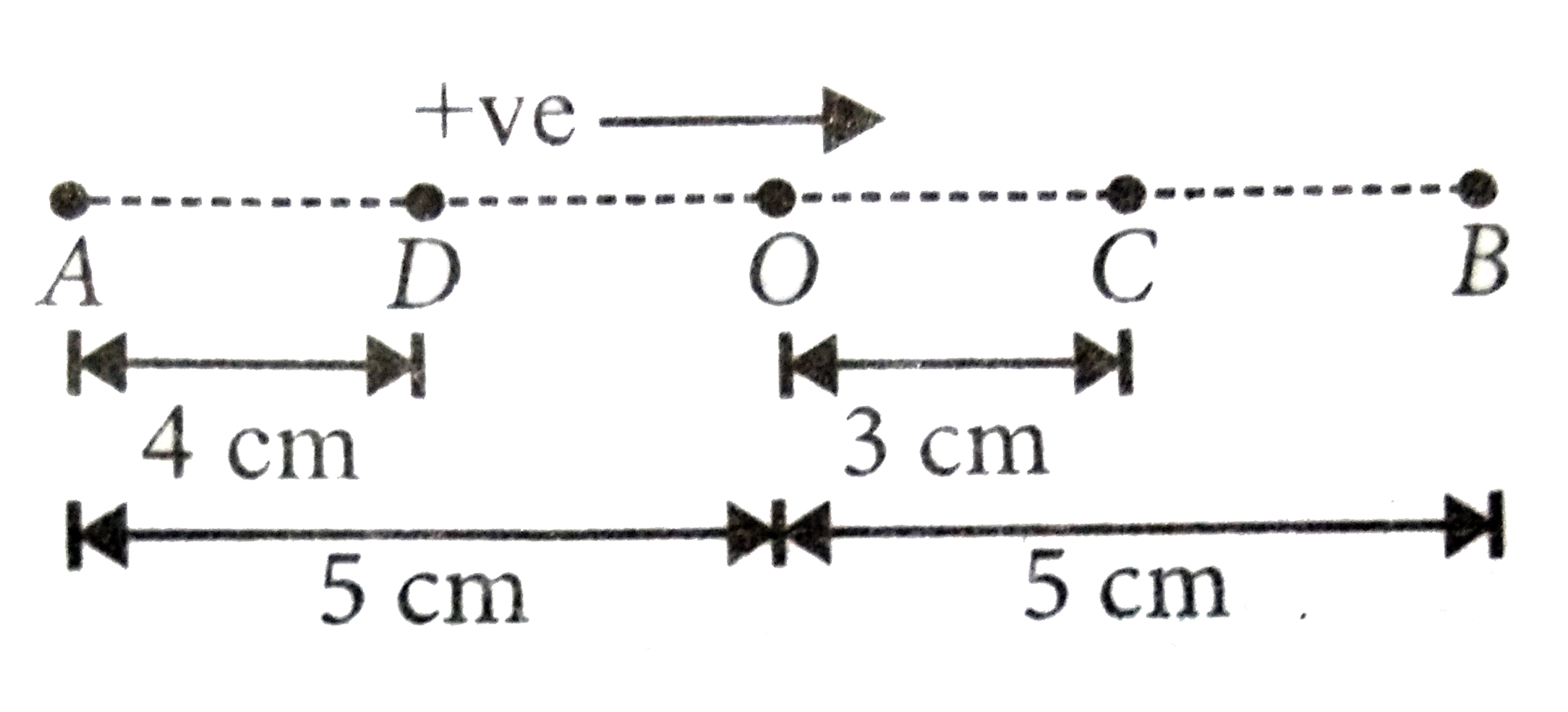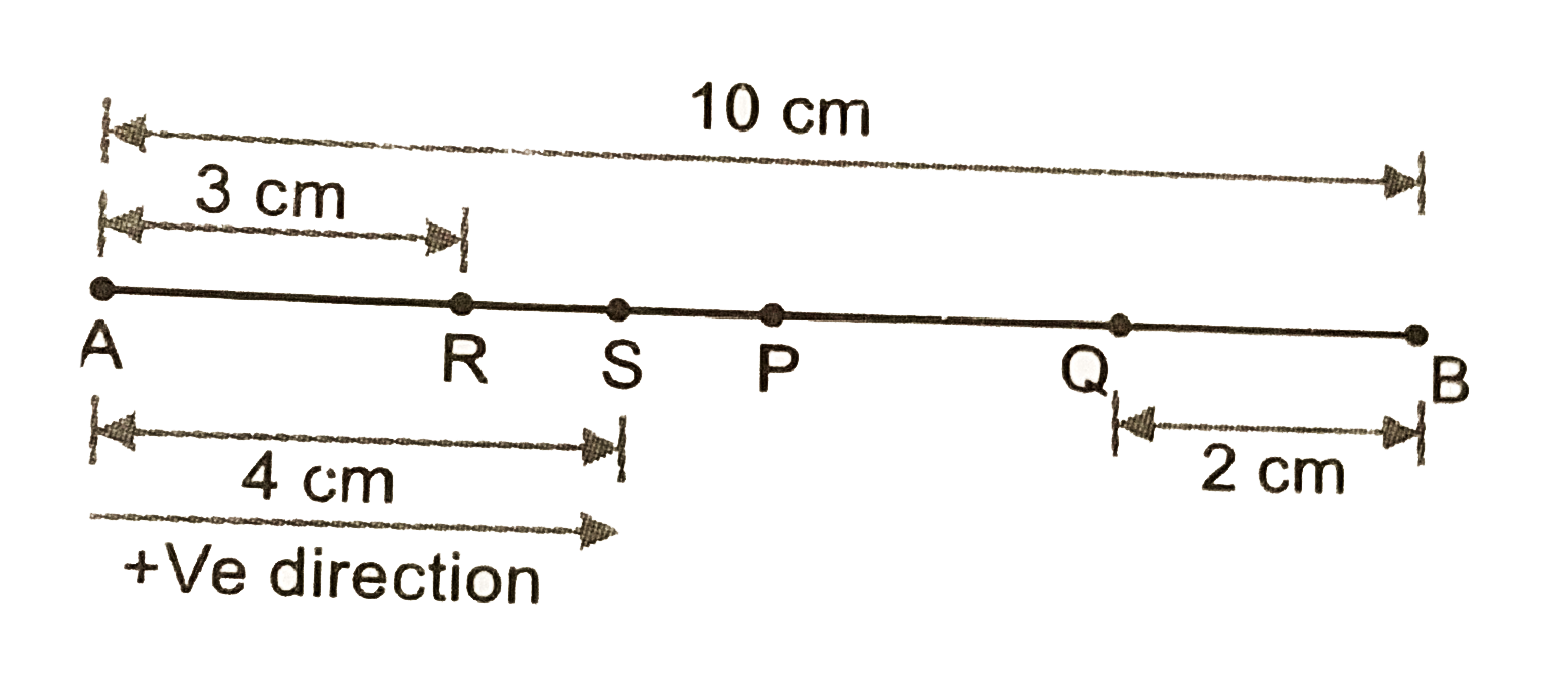A particle is in linear simple harmonic motion between two points. A and B, 10 cm apart (figure.) take direction from A to B as the positive direction and choose the correct statements.

AO= OB= 5cm
BC=8cm
The sign of acceleration and force on the particle when it is at A is negative.
The sign of acceleration and force on the particle when it is at B is positive
The sign of velocity, acceleration and force on the particle when it is 3 cm away from A going towards B are positive
The sign of velocity, acceleration and force on the particle when it is 4 cm away from B going towards A are positive.
The correct Answer is:C
Refer figure, A and B are the extreme positions and O is the mean position.
For SHM, acceleration and force is always directed towards the mean position. It is given that the direction A to B is positive.


Topper's Solved these Questions
- OSCILLATIONS BOOK - NCERT FINGERTPS ENGLISHCHAPTER - OSCILLATIONS EXERCISE - Force Law For Simple Harmonic Motion
2 Videos
- OSCILLATIONS BOOK - NCERT FINGERTPS ENGLISHCHAPTER - OSCILLATIONS EXERCISE - Energy In Simple Harmonic Motion
11 Videos
- OSCILLATIONS BOOK - NCERT FINGERTPS ENGLISHCHAPTER - OSCILLATIONS EXERCISE - Simple Harmonic Motion And Uniform Circular Motion
3 Videos
- MOTION IN A STRAIGHT LINEBOOK - NCERT FINGERTPS ENGLISHCHAPTER - MOTION IN A STRAIGHT LINEEXERCISE - NCERT Exemplar
6 Videos
- PHYSICAL WORLDBOOK - NCERT FINGERTPS ENGLISHCHAPTER - PHYSICAL WORLDEXERCISE - Assertion And Reason
10 Videos
Similar Questions
A particle is in linear S.H.M. between two points A and B, 10 cm apart. Take the direction from A to B as the positive direction and give the signs of velocity, acceleration and force on the particle when it is.
(a) at the end A (b) at the end B,
(c) at the mid point of AB going towards A,
(d) at 2 cm away from B going towards A,
(e) at 3 cm away from A goiing towards B, and
(f) at 4 cm away from A going towards A.

View SolutionA particle is in linear S.H.M. between two points A and B, 10 cm apart. Take the direction from A to B as the positive direction and give the signs of velocity, acceleration and force on the particle when it is.
(a) at the end A
(b) at the end B,
(c) at the mid point of AB going towards A,
(d) at 2 cm away from B going towards A,
(e) at 3 cm away from A goiing towards B, and
(f) at 4 cm away from A going towards A.

View SolutionA particle executes simple harmonic motion with an amplitude of 10 cm and time period 6s. At t=0 it is at position x=5 cm going towards positive x-direction. Write the equation for the displacement x at time t. Find the magnitude of the acceleration of the particle at t=4s.
View SolutionA particle executes simple harmonic motion with an amplitude of 10 cm. At what distance from the mean position are the kinetic and potential energies equal?
View SolutionA particle is vibrating in a simple harmonic motion with an amplitude of 4 cm . At what displacement from the equilibrium position, is its energy half potential and half kinetic
View SolutionTwo vectors A and B are such that A+B=C and A2+B2=C2. If θ is the angle between positive direction of A and B, then the correct statement is
View SolutionTwo vectors A and B are such that A+B=C and A2+B2=C2. If θ is the angle between positive direction of A and B, then the correct statement is
View SolutionA body is vibrating in simple harmonic motion . If its acceleration in 12cms−2 at a displacement 3 cm from the mean position, then time period is
View SolutionA particle is subjected to two simple harmonic motion along x and y-directions according to equations x = 4sin100πt and y = 3sin100πt Choose the correct statement –
View SolutionA particle executes linear simple harmonic motion with an amplitude of 3cm. When the particle is at 2cm from the mean position, the magnitude of its velocity is equal to that of its acceleration. Then, its time period in seconds is
View Solution
